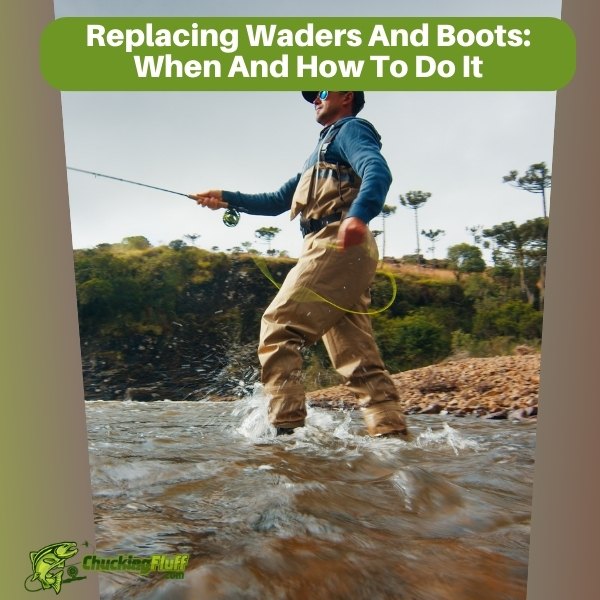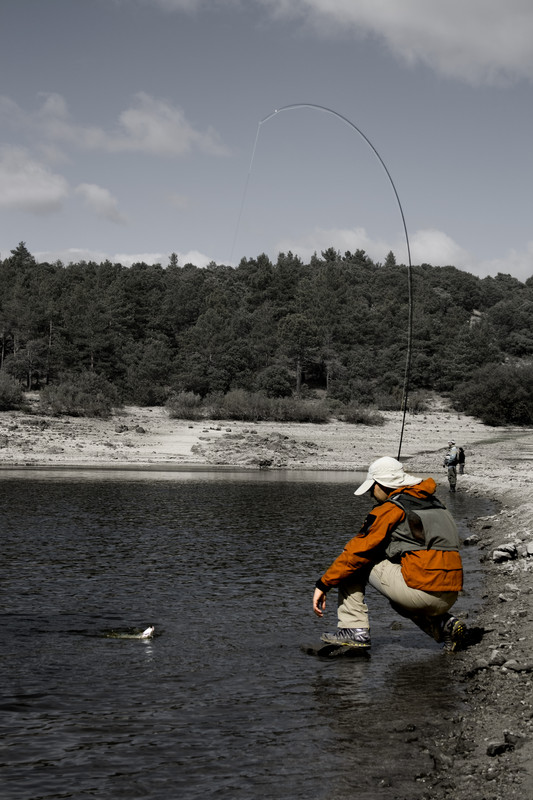| Disclosure: Just to be open and honest the buttons and links you click on in the website will in most cases take you to another website where you can purchase the products I am reviewing. As an Amazon Associate I earn from qualifying purchases. |
Replacing Waders And Boots: When And How To Do It
Quick Post Navigation
- Introduction
- Signs Your Waders Need Replacing
- 2. Worn-Out Seams and Material Thinning
- 3. Loss of Breathability and Insulation
- 4. Unpleasant Odors and Mold Growth
- Signs Your Boots Need Replacing
- 1. Sole Wear and Loss of Traction
- 2. Structural Breakdown: Cracks, Splits, and Weak Spots
- 3. Poor Ankle Support and Discomfort
- When to Repair vs. When to Replace
- Choosing the Right Replacement Waders
- Choosing the Right Replacement Boots
- Proper Care and Maintenance to Extend Lifespan
- How to Dispose of Old Waders and Boots Responsibly
- Conclusion
- FAQs
- “Check out some of our other Buying Guides”

Introduction
Your waders and boots are your shield against the elements when fly fishing. They keep you dry, warm, and protected from the unpredictable conditions of rivers, lakes, and saltwater flats. But like any well-loved piece of gear, they don’t last forever.
Waders and boots undergo a lot of stress—constant exposure to water, rough terrains, and regular wear and tear. Knowing when to replace them isn’t just about comfort; it’s about safety and maintaining peak performance. If you’re wondering whether it’s time for an upgrade, this guide will walk you through the telltale signs of aging gear, when to repair versus replace, and how to choose the best replacements for your needs.
Signs Your Waders Need Replacing
1. Persistent Leaks That Won’t Stay Patched
A small pinhole leak here and there is normal, and many anglers extend the life of their waders with patchwork. However, when you find yourself constantly sealing new leaks, it may be time to retire your waders. Eventually, materials break down to the point where no amount of patching will keep the water out.
How to Test for Leaks
- Turn your waders inside out and fill them with water.
- Look for damp spots forming on the fabric.
- Alternatively, use a flashlight inside the waders in a dark room to spot pinholes.
If you see multiple spots where water is seeping through, especially in high-wear areas like the knees and seat, it’s time for a new pair.
2. Worn-Out Seams and Material Thinning
Over time, wader seams take a beating from bending, stretching, and rubbing against rocks, logs, and gravel. If you notice seam tape peeling or fraying stitches, your waders may be beyond repair.
Similarly, if the material feels thinner in certain spots—especially in high-friction areas like the inner thighs or knees—your waders are likely nearing the end of their life. Weak material will eventually tear, making it impossible to maintain a watertight seal.
3. Loss of Breathability and Insulation
If you’re using breathable waders (such as Gore-Tex or other synthetic fabrics), they should allow moisture to escape while keeping water out. Over time, the breathable membrane degrades, and you might find yourself getting sweaty and clammy, even when it’s cool outside.
Neoprene waders, often used in colder conditions, can also lose insulation. If you notice that your legs are getting colder much faster than they used to in the same conditions, your neoprene waders are likely breaking down.
4. Unpleasant Odors and Mold Growth
Mildew, mold, and persistent odors are signs that your waders aren’t drying properly. Once mold sets into the fabric, it weakens the material, leading to a musty smell and compromised waterproofing.
Preventing Odor and Mold
- Always dry your waders completely before storing them.
- Avoid leaving them bunched up in a damp environment.
- Use a wader hanger for proper airflow.
If your waders already smell musty and the odor won’t go away even after cleaning, it’s time for an upgrade.
Signs Your Boots Need Replacing
1. Sole Wear and Loss of Traction
Your wading boots’ soles take a beating from rough riverbeds, sharp rocks, and constant exposure to water. If you notice that your boots no longer grip slippery rocks the way they used to, your traction is compromised.
How to Test Boot Traction
- Walk on a wet rock surface and see if you feel stable.
- If your felt or rubber soles feel smooth rather than textured, they’re worn down.
Felt vs. Rubber Soles
- Felt soles wear down faster but provide excellent traction on slick rocks. However, they’re banned in some states due to concerns about spreading invasive species.
- Rubber soles last longer but may require additional cleats or studs for better grip.
If your boots are losing grip, replacing them is crucial for your safety.
2. Structural Breakdown: Cracks, Splits, and Weak Spots
Cracks in the midsole, peeling rubber, or gaps between the sole and upper part of the boot mean your boots are coming apart. Even if they still feel comfortable, damaged boots don’t provide proper support and are more likely to let water in.
Look for:
- Cracked or peeling midsoles.
- Stitching that’s coming undone.
- Separating soles.
If your boots are falling apart, it’s time for a replacement.
3. Poor Ankle Support and Discomfort
Good wading boots provide ankle support, preventing injuries when navigating uneven riverbeds. If you feel like your boots are loose around the ankle or they don’t provide stability anymore, they’re no longer doing their job.
- If your boots feel sloppy when laced tightly, the structure has broken down.
- If you experience foot fatigue faster than usual, the midsole may have lost its cushioning.
Boots that no longer support your ankles can lead to sprains and discomfort, so don’t ignore these signs.
When to Repair vs. When to Replace
Minor Repairs That Can Extend Gear Life
- Pinhole leaks in waders: Use AquaSeal or a wader repair kit.
- Felt sole separation: Re-glue the sole if it’s peeling.
- Laces and eyelets: Replace broken laces or fix loose eyelets with strong adhesive.
When Replacement Is Necessary
- Widespread leaks in multiple areas of your waders.
- Extensive sole wear or structural breakdown in boots.
- Loss of support and fit in either boots or waders.
If you’re constantly making repairs and still dealing with discomfort or leaks, upgrading is the best long-term solution.
Choosing the Right Replacement Waders
1. Breathable vs. Neoprene Waders
- Breathable waders (Gore-Tex or similar materials) are lightweight and great for warmer conditions.
- Neoprene waders are better for cold-water fishing due to their insulating properties.
2. Stockingfoot vs. Bootfoot Waders
- Stockingfoot waders require separate boots, offering better versatility and durability.
- Bootfoot waders are convenient but can be less customizable in terms of fit and support.
Choosing the Right Replacement Boots
1. Sole Type
- Felt soles: Best for slippery rocks but banned in some areas.
- Rubber soles: More durable and suitable for hiking but may require added traction like cleats.
2. Fit and Comfort
- Always try boots on with the wader booties you’ll be wearing.
- Make sure there’s enough room for socks without being too loose.
Proper Care and Maintenance to Extend Lifespan
- Clean and dry waders after every trip. Store them hanging up rather than folded.
- Rinse boots after fishing, especially in saltwater. This prevents degradation and invasive species transfer.
- Store in a cool, dry place. Avoid direct sunlight, which can break down materials over time.
How to Dispose of Old Waders and Boots Responsibly
- Recycle materials when possible. Some manufacturers offer recycling programs.
- Donate usable gear to conservation groups, new anglers, or outdoor charities.
- Repurpose old waders into waterproof bags, gear organizers, or patch material.
Conclusion
Waders and boots are essential pieces of fly fishing gear, and knowing when to replace them can improve your comfort, performance, and safety. While small repairs can extend their lifespan, once they start failing, it’s best to upgrade. Investing in high-quality replacements ensures you stay dry, comfortable, and steady on your feet during every fishing trip.
FAQs
1. How often should I replace my waders?
Most anglers replace their waders every 3-5 years, depending on usage and care.
2. Can I repair my old boots instead of replacing them?
Minor repairs like re-gluing soles or replacing laces can extend their life, but if the structure is failing, it’s best to replace them.
3. Are breathable or neoprene waders better?
Breathable waders are better for warmer weather, while neoprene waders are ideal for cold conditions.
4. How do I prevent my waders from leaking?
Store them properly, avoid unnecessary wear, and repair pinhole leaks as soon as you spot them.
5. What’s the best way to break in new wading boots?
Wear them on dry land first, then do a few short wading trips to allow them to mold to your feet.


